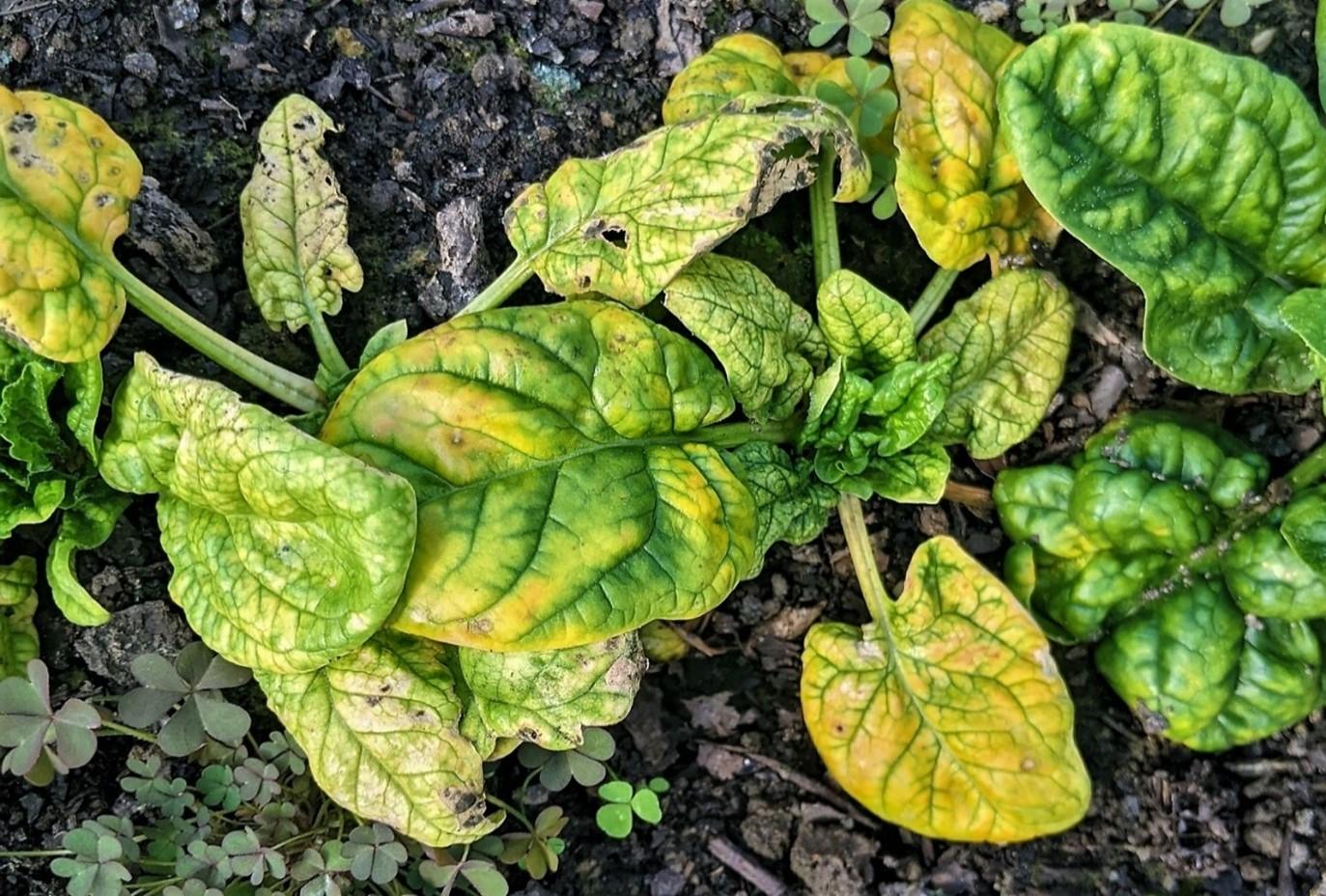Spinach crops found with cucumber mosaic virus

Spinach crops this season have had a tough time of it with red legged winter mites, spinach crown mites, leaf miner issues and now plants in high tunnels and in the field with cucumber mosaic virus, CMV.
The first symptom of cucumber mosaic virus on spinach is a mild yellowing of younger leaves and a strapping or "puckered" appearance with margins of infected leaves rolling downwards (fig. 1). As the disease progresses the foliage will show a yellow/ green mottle (fig. 2) with stunted and severely damaged crown leaves, and even death of the growing point. The earlier a plant becomes infected with the virus the more severe the symptoms and damage will be.
Cucumber mosaic virus is only one of more than 10 virus diseases of spinach, but it is one of the most common and economically important viruses of this crop. The virus is vectored by 75 different aphid species in a nonpersistent manner (meaning that the aphid acquires the virus within a minute of feeding on an infected plant but does not remain infective for very long). The virus can also be spread by cucumber beetles and by cultivating and handling plants. CMV can overwinter in many weed species and can survive the winter in the roots of a weed and move to the aerial parts in the spring, where it can then be transmitted by aphids to other plants. Some of the more important weed hosts include: bur- and wild-cucumber, catnip, chickweeds, clovers, curly dock, dandelions, fleabane, flowering spurge, groundcherries, horsenettle, Jimsonweed, milkweed, pigweed, pokeweeds, nightshades and white cockle. These infected weeds often show no virus symptoms. Vegetable hosts include carrot, celery, cucurbits, legumes, lettuce, onion, pepper, spinach and tomato.

The worst-case scenario would be to have heavy weed pressure in the field or a high tunnel along with a high aphid population (fig. 3). Winter annual weeds like chickweed need to be eliminated from the HT or the field before planting and this weed management needs to be maintained throughout production of the crop. Organic growers can use row covers to protect spinach plants from aphids and virus transmission. Growers need to scout for aphids and manage this pest early, so that populations do not build to high levels. There are several aphicides that can be used to control aphids on spinach that can be found in the 2022-2023 Mid-Atlantic Commercial Vegetable Production Recommendations guide (pdf).
Finally, there are several commercial spinach varieties that are resistant to CMV that should be considered for use: Avon, Renegade, Winter Bloomsdale, Melody F1, Menorca, Butterflay, Virginia Savoy, Bloomsdale Savoy, Early Hybrid #7, Marabu RZ and Unipak 151.
This article appears in June 2023, Volume 14, Issue 4 of the Vegetable and Fruit News.
